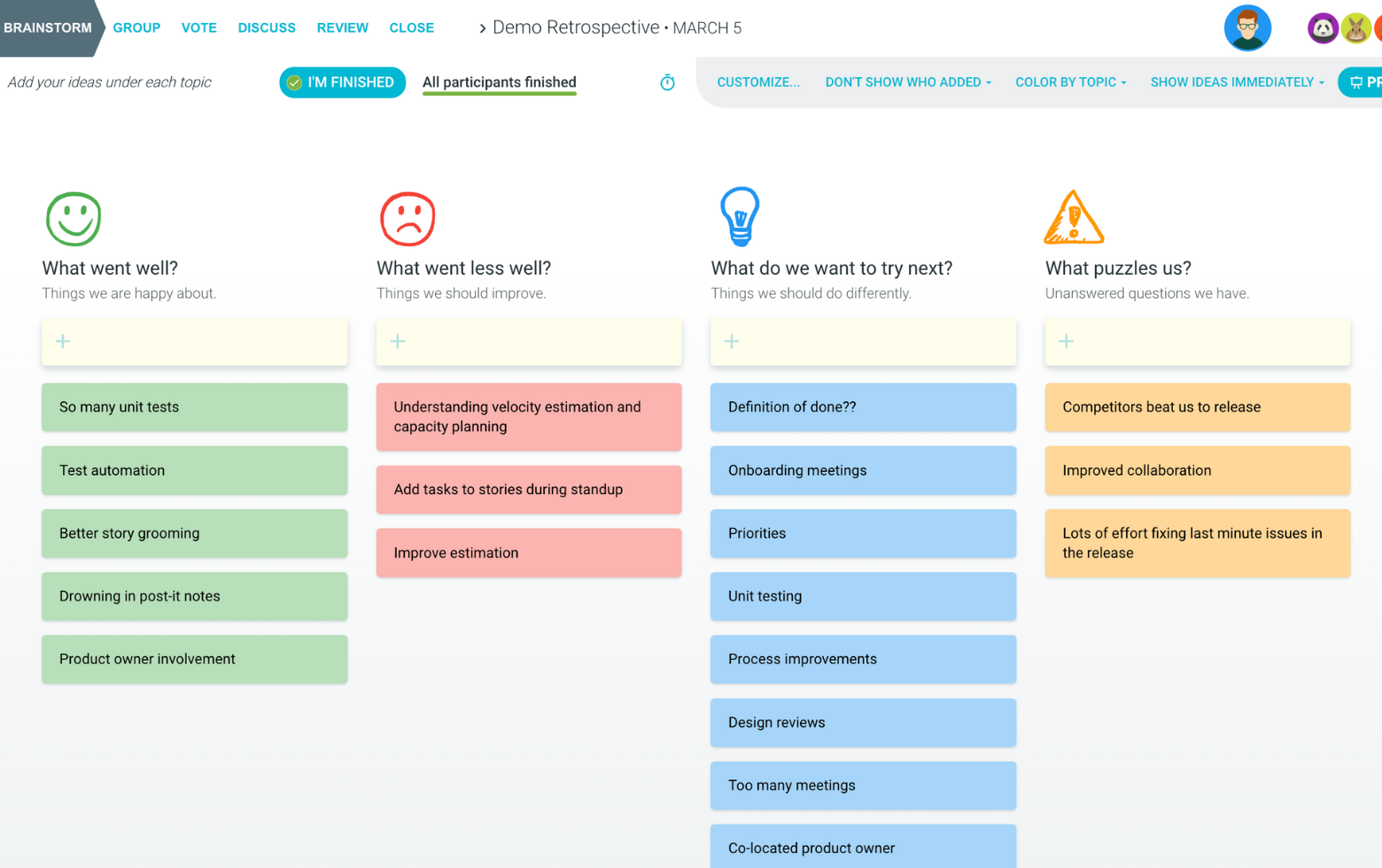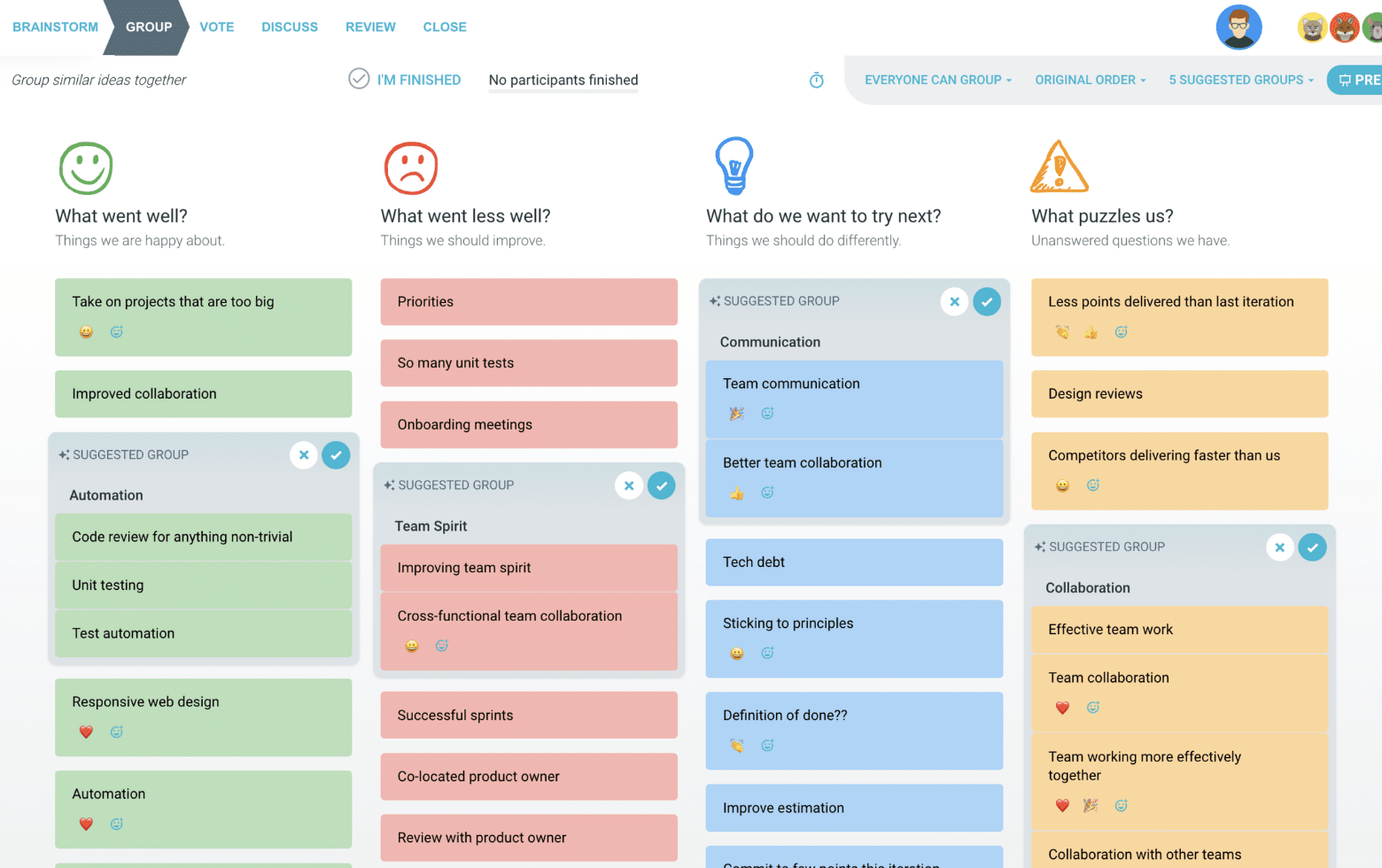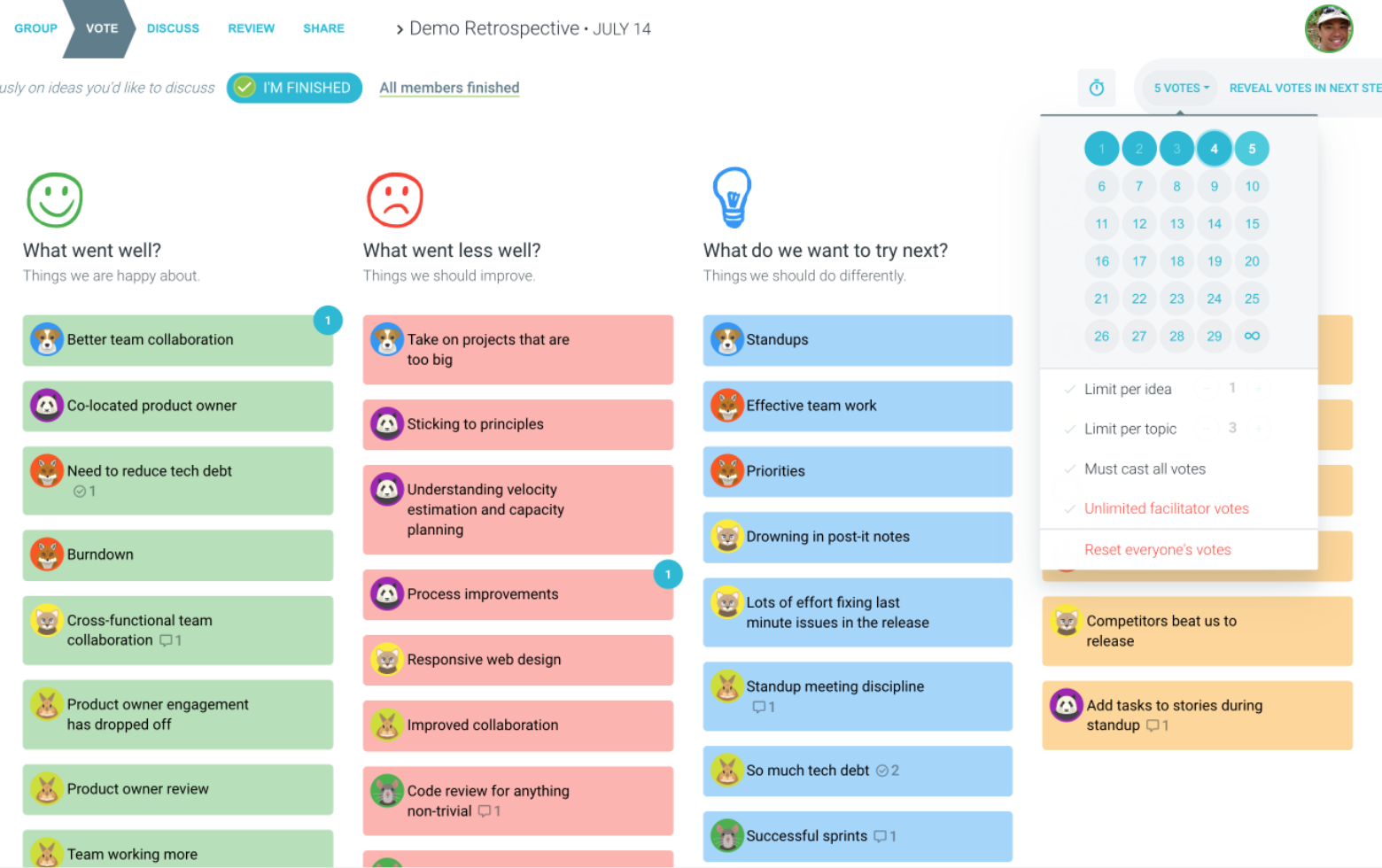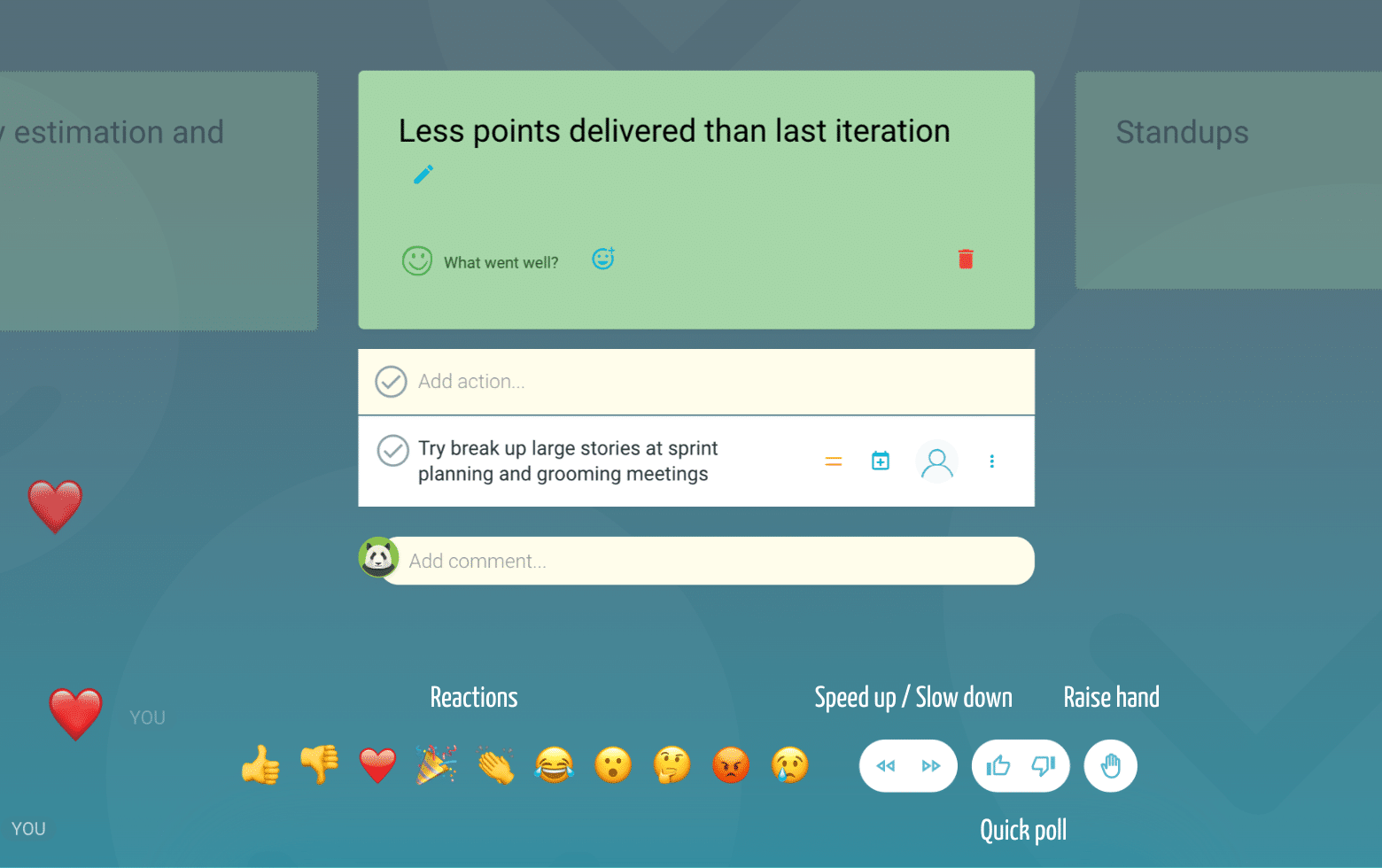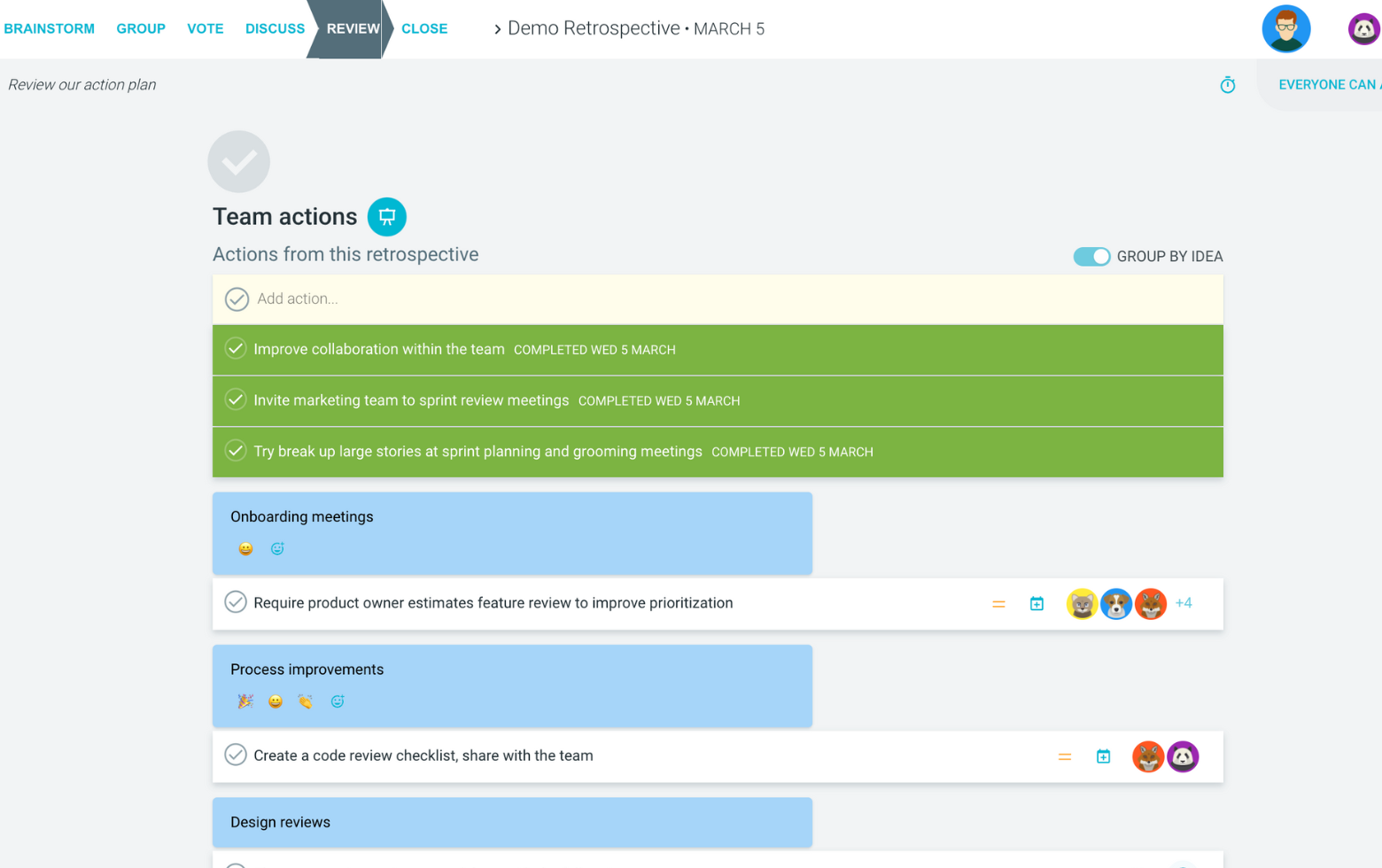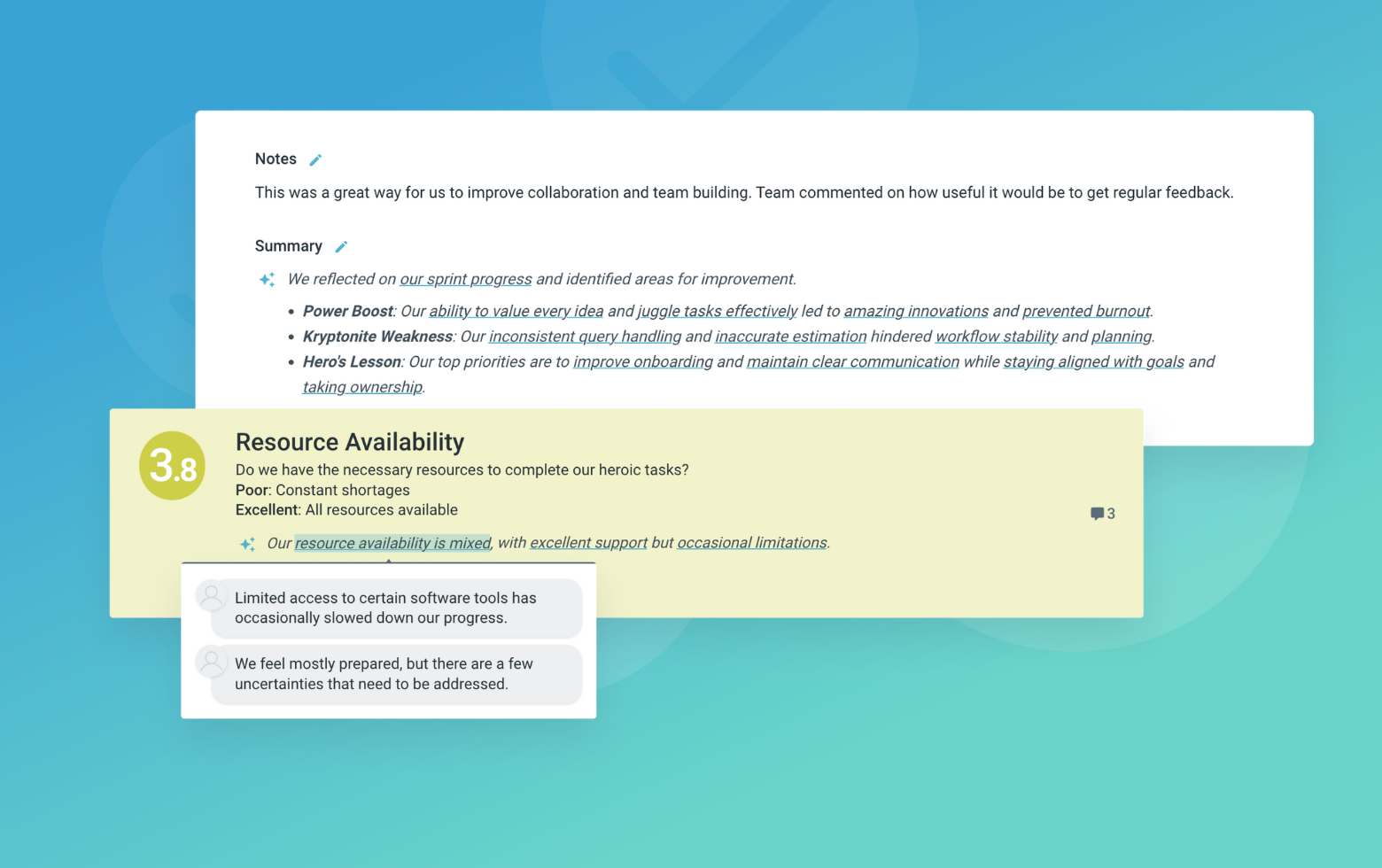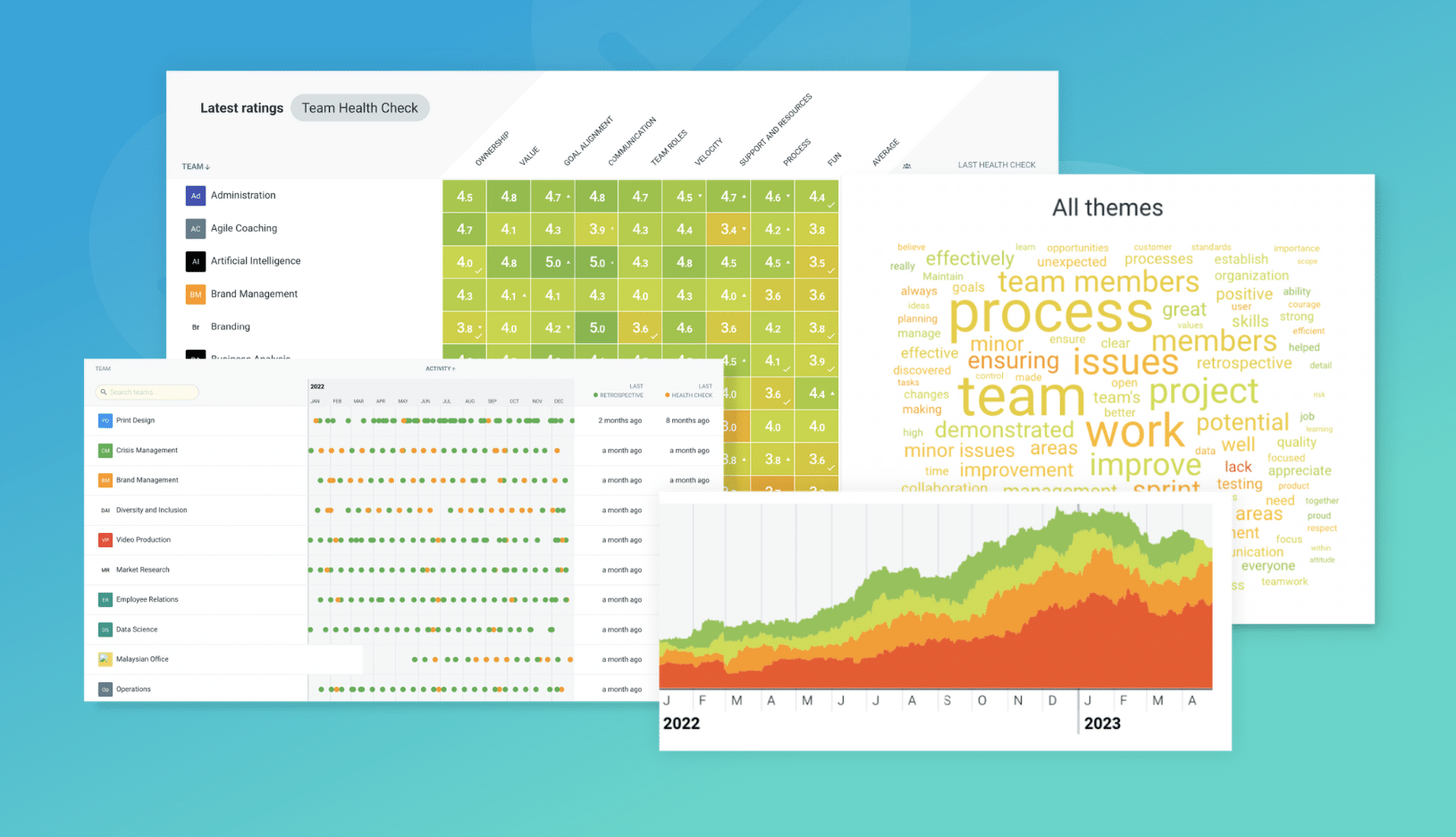The 4Ls stands for Liked, Learned, Lacked and Longed For and was initially developed by Mary Gorman and Ellen Gottesdiener. It is a simple and popular technique for scrum masters and their team to highlight the positives (liked and learned), as well as the negative (lacked and longed for) from both a factual and emotional perspective.
This approach provides a balanced view of both positive experiences and areas for improvement.
By exploring what team members liked and learned, the exercise celebrates successes and captures valuable insights. The 'lacked' and 'longed for' categories help identify gaps and opportunities for enhancement, creating a comprehensive picture of the team's experience.
What is The Four Ls Retrospective
Liked
What did we like about the last sprint?
Focus on positive experiences and successful outcomes. Encourage participants to share specific examples of what worked well, from processes to interactions. This helps identify practices worth continuing and builds team morale.
Learned
What did we learn from the last sprint?
Capture new insights, discoveries, and lessons learned. These could be technical skills, process improvements, or interpersonal insights. Emphasize that learning from both successes and failures is valuable.
Lacked
What do we think was missing from the last sprint?
Address gaps and missing elements without assigning blame. Guide the discussion toward constructive identification of areas that need attention, whether they're resources, processes, or capabilities.
Longed for
What could we have done better in the last sprint?
Focus on aspirational improvements and concrete solutions. Encourage participants to think about realistic changes that could enhance team performance and satisfaction in future sprints.
Suggested icebreaker questions
- If you could instantly master one new skill that would help the team, what would it be and why?
- What's one thing you learned recently that surprised you?
Ideas and tips for your retrospective meeting
- Start with the 'Liked' category to create a positive atmosphere before diving into improvement areas
- Use timeboxing for each L to ensure balanced discussion across all categories
- Encourage specific examples rather than general statements to make feedback more actionable
- Look for patterns across categories to identify systemic issues or opportunities
- Create action items that address the 'Lacked' and 'Longed for' feedback while maintaining what people 'Liked'
- Consider using dot voting to prioritize which items to address first
.
How to run effective meetings with TeamRetro
Start Your Session in a Click
Log into TeamRetro and choose your template. Customise questions and the workflow to create your perfect retro for your team.
Create Your Team Easily – No Separate Accounts Needed
Brainstorm Individually – Free From Bias
Smart Grouping for Faster Insights
Fair, Flexible, and Fast Voting
Engage, React, and Capture Key Insights
Walk your team through ideas one by one with Presentation Mode. Stay in sync, spark real-time discussions, and capture feedback with comments, live reactions, and polls—all in one place.
Turn Ideas Into Action
Propose next steps with team buy-in, get AI-powered action suggestions, and keep everything in one place. Committed actions sync to your personal dashboard and integrate with your workflow tools—keeping you on track.
Save, Share, and Stay on Track
Get quick AI-powered summaries, add facilitator notes, and store retrospectives in your library for easy access. Schedule your next session and track published actions to keep your team accountable at the next retro.
Turn Team Data into Actionable Insights
Uncover trends, common themes, and key engagement metrics at a glance. Track sentiment shifts, analyze conversations, and monitor completed actions to drive continuous improvement.


